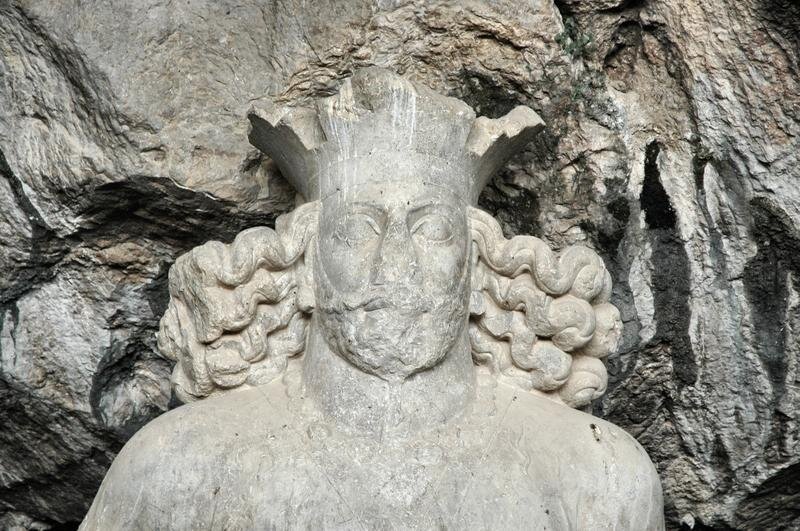Take a walk through the ancient city of Bishapur

TEHRAN - Bishapur (literally, “The city of Shapur”) was the grand capital of the Sassanid king, Shapur I whose armies defeated the Romans three times.
Like an arch bridge at Shushtar, much of Bishapur was allegedly built by Roman soldiers taken captive after their Emperor Valerian was defeated in c. 260 CE.
Bishapur is situated south of modern Faliyan, just off the ancient road between Persis and Elam, which connected the Sasanian capitals Istakhr (close to Persepolis) and Firuzabad to Susa and Ctesiphon. The city was built near a river crossing.
The site has been partly excavated so far, revealing the Palace of Shapur and the nearby Temple of Anahita, where a stairway leads underground to a pool around which the faithful once walked and prayed. Bishapur was not a completely novel settlement: archaeologists have found remains from the Elamite and Parthian ages.
Many architectural aspects of Bishapur look Roman and do not belong to Iranian building traditions. An example is what specialists call the "Hippodamian Plan", which means that the city looks like a gridiron, while Iranian cities usually were circular in design, according to Livius.org; a website on ancient history written and maintained since 1996 by the Dutch historian Jona Lendering.
The core of the city was the old castle, situated on a steep rock, which is in itself one of the most interesting geological features of the southern Zagros mountain. The oldest monument was the relief I, in the Tang-e Chowgan gorge, which celebrates one of the earliest victories of the Sassanid monarch.
Reliefs II and III commemorate the defeat of Valerian. Probably, the small relief VII did the same. While these were cut, the city, palace, and the so-called Temple of Anahita were built by the Roman prisoners of war. Another monument from the founding period is the cave monument.
The city, surrounded by walls that may have stood some ten meters high, was inhabited by some 50,000 to 80,000 people. Later monuments include reliefs V (investiture of Bahram I), IV (an Arab embassy to Bahram II), and VI (victory of Shapur II).
Bishapur remained an important city until the Arab invasion of Persia and the rise of Islam in the second quarter of the seventh century. It became a center of Islamic learning (a madrassah has been excavated) and there were still people living over here in the tenth century, but the decline had started in the seventh century.
The main monuments have been excavated between 1935 and 1941. Nevertheless, most of the city is still buried, and incidentally, teams of archaeologists returned to the site afterward.
In 2018, UNESCO added an ensemble of Sassanian historical cities in southern Iran -- titled “Sassanid Archaeological Landscape of Fars Region”-- to its World Heritage list.
The ensemble is comprised of eight archaeological sites situated in three geographical parts of Firuzabad, Bishapur, and Sarvestan. It reflects the optimized utilization of natural topography and bears witness to the influence of Achaemenid and Parthian cultural traditions and of Roman art, which later had a significant impact on the architecture and artistic styles of the Islamic era.
The Sassanid archaeological landscape represents a highly efficient system of land use and strategic utilization of natural topography in the creation of the earliest cultural centers of the Sassanid civilization.
AFM
